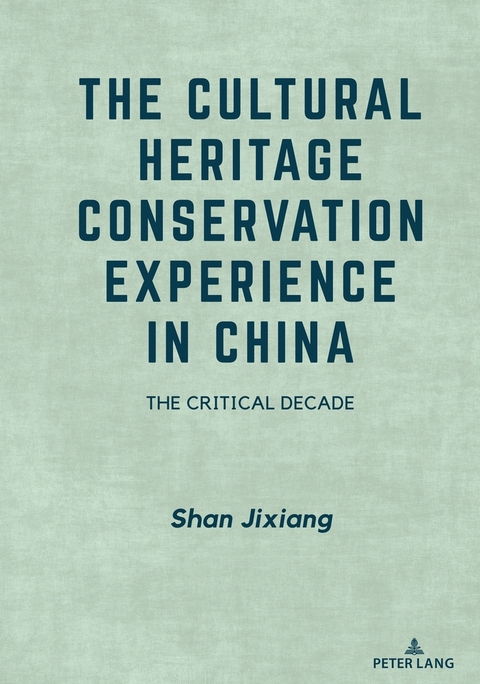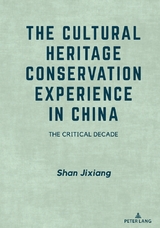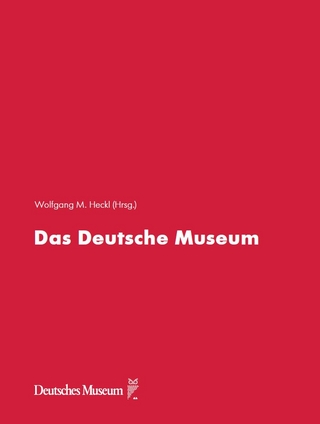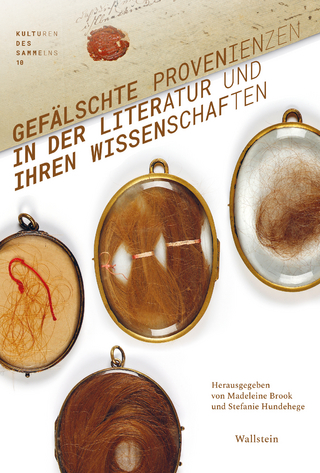The Cultural Heritage Conservation Experience in China
Peter Lang Publishing Inc (Verlag)
978-1-4331-6907-6 (ISBN)
This book summarizes China’s ten-year experience of cultural heritage protection by providing case analysis of both successful and unsatisfying practices. It is written with an academic perspective and based on the author’s real practice. The first part highlights the cultural distinction in urban planning; the second part analyzes the cultural heritage protection concept and practice in China’s urbanization; the third part focuses on China’s museums in a revolutionary era. The book records the development stages of China’s cultural heritage protection theory and practice and shows the challenges in the new era. It answers questions such as how to protect historic community and villages, how to protect the heritage site and build heritage parks, and what is the role of museums regarding social responsibility and people’s well-being. Cultural heritage and museum planning are closely linked to the economy, urban life, and local memory. China’s experience in the past decade is also meaningful to cultural protection courses on an international level.
This book summarizes China’s ten-year experience of cultural heritage protection by providing case analysis of both successful and unsatisfying practices. It is written with an academic perspective and based on the author’s real practice. The first part highlights the cultural distinction in urban planning; the second part analyzes the cultural heritage protection concept and practice in China’s urbanization; the third part focuses on China’s museums in a revolutionary era. The book records the development stages of China’s cultural heritage protection theory and practice and shows the challenges in the new era. It answers questions such as how to protect historic community and villages, how to protect the heritage site and build heritage parks, and what is the role of museums regarding social responsibility and people’s well-being. Cultural heritage and museum planning are closely linked to the economy, urban life, and local memory. China’s experience in the past decade is also meaningful to cultural protection courses on an international level.
Introduction – Reflections on Improving the Conservation and Management of Global Cultural Heritage – The Conservation of Cultural Heritage in a Rapidly Urbanizing Society – Reflections on the Overall Conservation of Large-Scale Ancient Cities – From “Developing Cities Around Old Boroughs” to “Developing New Boroughs and Protecting Old Ones” – From “Drastic Demolition and Construction” to “Integral Conservation” – From “Large-Scale Renovation of Old and Dilapidated Homes” to “Gradual Progress and Organic Renewal” — Exploring scientific paths and instilling organic order in the conservation of historical boroughs (Part Two) – Placing an Emphasis on Lineal Heritage – Emphasizing New Forms of Cultural Heritage – Valuing the Conservation and Development of Commercial Heritage Belonging to Time-Honored Brands – Analyzing the Transformation from Functional Cities to Cultural Cities – Conservation of Urban Cultural Heritage and Urban Cultural Construction – Reflections on Cities, Culture and Urban Culture – Urban Culture and Traditional Culture, Regional Culture and Cultural Diversity – The Sublimation of Urban Cultural Ideals and the Construction of Cultural Cities – Reshaping urban cultural characteristics and building “cultural cities” – The Ideals and Practice of 20th-century Cultural Heritage Conservation – The Development of Cultural Heritage Management in China – Research on Rural Architectural Heritage Conservation and Methods – Focusing on New Cultural Heritage: ‘Cultural Route’ Heritage Conservation – A Brief Analysis of Urban Cultural Landscape Heritage Conservation – Investigations and Practice in Rural Cultural Landscape Heritage Conservation – From “Cultural Landscape” to “Cultural Landscape Heritage” – A Preliminary Discussion on Scientific Development of Archaeological Site Parks – Site Museum for Conservation and Presentation of Archaeological Sites – Site Museum of Protective Reuse – Ecomuseum: Protection in Original Context (I) – Ecomuseum: Protection in Original Context (II) – List of Key Cultural Heritage Organizations Concepts, Documents, Laws, Organizations and Documents mentioned in text.
| Erscheinungsdatum | 19.12.2022 |
|---|---|
| Verlagsort | New York |
| Sprache | englisch |
| Maße | 1778 x 254 mm |
| Gewicht | 871 g |
| Themenwelt | Kunst / Musik / Theater |
| Geisteswissenschaften ► Geschichte ► Hilfswissenschaften | |
| Naturwissenschaften ► Geowissenschaften ► Geografie / Kartografie | |
| Sozialwissenschaften ► Ethnologie | |
| Sozialwissenschaften ► Soziologie | |
| Technik ► Architektur | |
| Schlagworte | Ancient City Preservation • archaeological heritage • Archaeological Heritage Park • Architectural heritage • Cultural diversity • Cultural Heritage Protection • Cultural Scenery • Eco-Museum • Shan Jixiang • The Cultural Heritage Conservation Experience in China: The Critical Decade |
| ISBN-10 | 1-4331-6907-X / 143316907X |
| ISBN-13 | 978-1-4331-6907-6 / 9781433169076 |
| Zustand | Neuware |
| Informationen gemäß Produktsicherheitsverordnung (GPSR) | |
| Haben Sie eine Frage zum Produkt? |
aus dem Bereich




